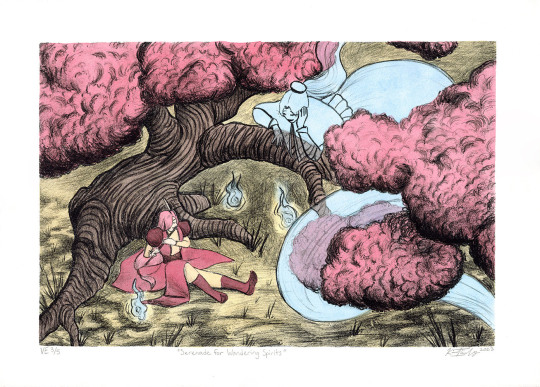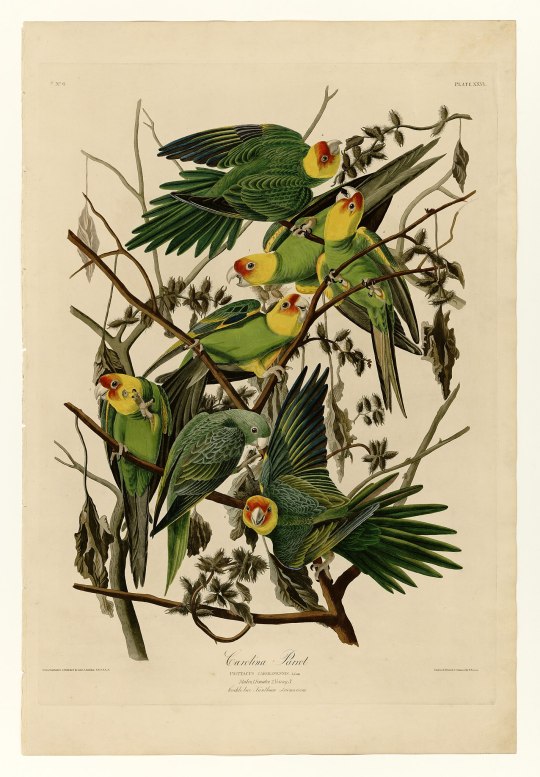#lithographic stone
Text


reconstruction of Archaeopteryx
Archaeopteryx fossil - Berlin specimen
Paleontologists have long thought that Archaeopteryx ('ancient feather' or 'ancient wing') fossils placed the dinosaur at the base of the bird evolutionary tree. Recent evidence suggests the beast may be best described as a birdlike dinosaur rather than an early bird, though it probably could fly after a fashion. Archaeopteryx is about 150 million years of age, while the ancestor of all living birds lived sometime in the Late Cretaceous — 50 to 65 million years ago.
In 1861, the first Archaeopteryx skeleton, which was missing most of its head and neck, was unearthed near Langenaltheim, Germany.
However, the most complete skeleton, the Berlin Specimen, was discovered in 1874 or 1875 near Eichstatt, Germany by farmer Jakob Niemeyer, who sold it in 1876 to innkeeper Johann Dörr. Through various transactions, the fossil, which is the first found to have an intact head, eventually wound up being in the Humboldt Museum fur Naturkunde, where it still resides. To date there have been 11 other Archaeopteryx fossils found, the latest discovered in 2010 (described in 2014). All of the fossils come from the limestone deposits near Solnhofen. Recent tests performed on the specimens indicate that the primary coloring of the feathers of Archaeopteryx were black, possibly with lighter colored tips.
Jurassic deposits of Solnhofen limestone in southern Germany are marked by rare but exceptionally well preserved fossils of many species. It was first quarried nearly 2,000 years ago by the Romans who used the stone for paving roads and building walls. In later Roman times the mosaic floor of the church of Hagia Sofia in Istanbul was made of this limestone. In the Middle Ages, the stone was also used as floor and roofing material, and artisans used the material in the making of bas-relief sculptures and headstones. A decisive turning point in the history of the stone was the determination in 1673 by Alois Senefelder that the dense, fine-grained material was ideally-suited for use in the newly discovered printing process of lithography, a use that caused quarrying to increase dramatically.
20 notes
·
View notes
Text

Stone Soup
8x10" stone lithograph, inspired by Marcia Brown's 1947 retelling - her illustrations where some of my favorites as a kid
ID: A black and white lithograph print. At the center is a black pot with a large stone hovering above it and a fire glowing below. Around these against a black background are foods from the story - a bag of grain, a bunch of carrots, potatoes, cabbage, a side of beef, and a can of milk. The border around it has a sword at the top right, a big spoon in the bottom left, and hands reaching out on the top left and bottom right.
#lithography#lithograph#stone litho#printmaking#print#stone soup#folktale#marcia brown#art#described#portfolio#portfolio: print#portfolio: litho
27 notes
·
View notes
Text

making a start on another lithography piece.
this is based off the Lai of Guigemar by Marie de France. I have been having some particular feelings! towards it after reading Hannah Piercy's analysis of the lai. I'd highly recommend reading the book (cited below), all the chapters that i've read so far i've found really insightful and interesting + this book would have been brilliant to have on hand in my final year of my degree. (the book is open access so you can read it + download the pdf completely legally and for free!!)
in terms of the image itself i'm really happy with the figure but i am very much tempted to not bother with the border of the hind. I would rather try and include it in maybe some sort of companion work. I think the border might just feel a little odd.


Piercy H (2023) Resistance to Love in Medieval English Romance: Negotiating Consent, Gender, and Desire, 1st edn, D.S. Brewer, Cambridge.
#my art#wip#lithography#lithograph#stone lithography#printmaking#print#medieval#medieval literature#marie de france#guigemar#art#please reblog
11 notes
·
View notes
Text

Jellyfish - Stone Lithography Print
4 notes
·
View notes
Text


Litho wips/ drawing detail shots! 2021.
#art#black artists on tumblr#drawing on stone#stone lithography#lithography#litho#lithograph#printmaking#printmaker
4 notes
·
View notes
Text





"Serenade for Wandering Spirits"
varied edition of hand-colored stone lithographs
These were the last stone lithographs I printed before graduating! I mostly used my bard and ghost characters for my animation classes, but I was happy to make a print of them ❤ While I printed these a while ago, I only just finished them up last month by handcoloring them all with watercolor. I think adding watercolor really made them more lively! I also couldn't decided on one color combination so I made a varied edition. Which version is your favorite?
#my art#printmaking#lithograph#lithography#original characters#stone lithography#illustration#original#traditional art#2023
6 notes
·
View notes
Text

"Two Algerian Women" Jeffery Ingram Stone, Lithograph 1974
Source:
Hanover, MA
Eldred's
#art#algerian#two algerian women#jeffery ingram stone#lithograph#1970s#auction#online#link#vintage#bidding#auctioned
2 notes
·
View notes
Text
was reading a book and the author wrote that something ‘was carved into their memory, etched like a lithograph’ and I was like . you don’t carve a lithograph but ok
#and the etching of a lithograph is the least like… indenting of the printmaking processes#it’s just a process of an oil pencil reacting w the ink#the pencil just sits on the stone like kdkfhjsjsjsjs#awesome process! extremely dope and the grinding of the layers to be able to make a new print is v physical#but doesn’t work for this metaphor I’m afraid#text post
6 notes
·
View notes
Text

Enciclopedia delle Arti e Industrie
1885
Color lithographic process using superimposed impressions from four different stones.
489 notes
·
View notes
Text

“Darling, darling. I live in you, and you would die for me. I love you so.”
carmilla (stone) lithograph | prints here
#I hope everyone is having a good month full of gay vampires#carmilla#sheridan le fanu#gothic horror#lithograph#artists of Tumblr#also partially inspired by the vampire lovers (1970) which is just carmilla but hammer horror <3
193 notes
·
View notes
Text


Stone lithograph ready for etching.
142 notes
·
View notes
Text
It was on this day (21 February) in 1918 that the last known Carolina Parakeet, Incas, died at the Cincinnati Zoo – in the same cage the last known Passenger Pigeon, Martha, had died only four years earlier.

Carolina Parakeet (Conuropsis carolinensis, Linnaeus 1758) preserved specimen in the Field Museum of Natural History collection. [Wikimedia Commons]
Audubon’s illustration of the species in original edition of The Birds of America is perhaps one of his finest works (and definitely my personal favorite!), capturing the boisterous beauty of these colorful and highly social birds as they feast on cocklebur seeds. There is even a juvenile in the mix, its head still green:

"Carolina Parrot" (Conuropsis carolinensis carolinensis subspecies), Plate XXVI in the original edition of The Birds of America (1827-38), engraving by Robert Havell, Jr. after John James Audubon’s original 1825 watercolor painting, hand-colored engraving and aquatint on wove paper. [Wikimedia Commons]
Unfortunately, the plate made for the smaller second edition is much inferior to the original, thinning out both the flock and foliage:

“Carolina Parrot or Parrakeet” (Conuropsis carolinensis carolinensis subspecies), Plate 278 in the first Royal Octavo edition of The Birds of America (1840-4), engraving by J. T. Bowen after J. J. Audubon, hand-colored stone lithograph. [Wikimedia Commons]
Those green-bodied Carolina Parakeets in Audubon’s published plates are the nominate subspecies, Conuropsis carolinensis carolinensis. He also made an unpublished watercolor of the other subspecies, Conuropsis carolinensis ludovicianus, which tended to have a more bluish body and paler yellow head plumage:

“Carolina Parrot” (Conuropsis carolinensis ludovicianus subspecies), unpublished watercolor painting by John James Audubon, 1811. [Wikimedia Commons]
The Carolina Parakeet (aka Carolina Parrot or Carolina Conure) was the northernmost ranging parrot and the only one native to the eastern United States. Audubon warned of their rapidly declining numbers during the early 1800s, describing witnessing large numbers of Carolina Parakeets being killed by landowners angered by their crop raids. The last confirmed wild sightings were in 1910, with unconfirmed sightings persisting into the 1940s; Incas was the last captive bird, and with his passing in 1918 and no further verified living specimens thereafter, the species was officially declared extinct in 1939.
Read more about the demise of the Carolina Parakeet and Audubon's valuable visual records of this now-extinct species on the blog:
#Carolina Parakeet#Carolina Parrot#Carolina Conure#parrot#parrots#bird#birds#birds in art#Audubon#John James Audubon#ornithology#extinction#extinct species#watercolor#painting#illustration#lithograph#book plate#book illustration#Cincinnati Zoo#blog post#OTD#animals in art
984 notes
·
View notes
Text

Birchwood Ravens by Elisabeth Sommerville stone lithograph
108 notes
·
View notes
Text

Behind the scenes in studio. 2021. As I was etching my stone.
#lithograph#lithography#printmaker#printmaking#etching#art#black artists on tumblr#stone lithography
2 notes
·
View notes
Text

Robert Rauschenberg, Fuse (Stoned Moon), (lithograph on paper, from a suite of thirty-four lithographs), Gemini G.E.L., Los Angeles, CA, 1969 [SFMOMA, San Francisco, CA. © Robert Rauschenberg Foundation and Gemini G.E.L.]
173 notes
·
View notes
